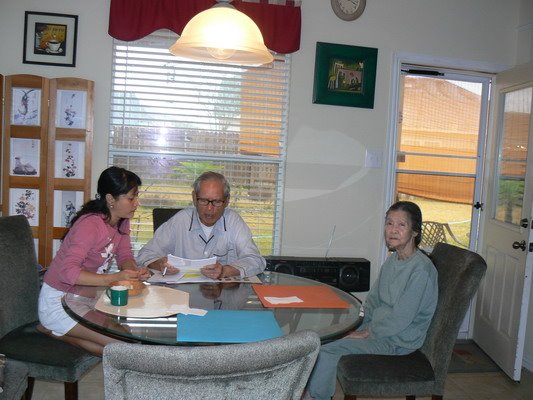I. TOÁT YẾU
Assalayana Sutta - To Assalàyana.
A young brahmin approaches the Buddha to argue the thesis that the Brahmins are the highest caste.
Giảng cho Assalayana.
Một thanh niên bà la môn đến Phật tranh luận đề tài giai cấp bà la môn là cao nhất.
II. TÓM TẮT
Một số đông bà la môn từ khắp nơi có việc đến thành Xá vệ, nơi Phật đang trú. Họ đề cử Assalayana trẻ tuổi, đầu cạo trọc, thông minh, có tài biện bác, tinh thông ba tập Veda, đến tranh luận với Phật vì Ngài chủ trương sự thanh tịnh của bốn giai cấp [1]. Ba lần thanh niên từ chối, bảo Gotama là vị nói đúng pháp, rất khó tranh luận bại Ngài. Nhưng đại chúng bà la môn nói thanh niên đã sống đời tu hành ẩn sĩ [2], nên có thể thảo luận với Phật. Cuối cùng đã làm theo yêu cầu của họ. Thanh niên đến Phật, mở đầu với lời tuyên bố của bà la môn: Chỉ có bà la môn là con chính thống sinh ra từ miệng Phạm thiên, và hỏi ý kiến Phật về quan điểm ấy. Phật phản bác với những luận cứ:
1. Các nữ bà la môn cũng có kinh nguyệt, mang thai và cho con bú như tất cả phụ nữ thuộc mọi giai cấp; các người bà la môn cũng sinh ra từ nữ căn như tất cả mọi người [3].
2. Tại hai miền Yona và Kamboja [4] biên địa của Ấn độ, chỉ có hai giai cấp là chủ và tới, người hết làm chủ thì làm tớ, và cũng có người ngược lại, sau khi làm tớ lại trở thành chủ.
3. Người thuộc cả 4 giai cấp phạm 10 ác nghiệp [5] khi chết đều đọa vào cõi dữ: bình đẳng trên phương diện chịu ác báo.
4. Người bất cứ giai cấp nào, mà từ bỏ 10 ác làm 10 lành thì khi thân hoại mạng chung cũng đều được sinh vào thiện thú, cõi trời.
5. Cả 4 giai cấp đều có thể tu tập tâm từ không sân hận, chứ không riêng gì giai cấp bà la môn mới tu được: bình đẳng trên phương diện tu tập.
6. Cả 4 giai cấp đều có thể xuống sông tắm rửa tẩy sạch bụi bặm.
7. Ngọn lửa do người Bà la môn đốt bằng gỗ thơm, với lửa do các giai cấp khác đốt với gỗ tồi, đều có thể cháy sáng và có tác dụng như nhau.
8. Trong hôn phối, con của một người bà la môn kết hôn với một người thuộc giai cấp khác sẽ giống cả cha lẫn mẹ, thuộc cả hai dòng máu.
9. Nếu có hai anh em cùng mẹ khác cha, một người thông hiểu thánh điển, một người không thông, các bà la môn sẽ cúng dường tôn trọng người thông hiểu thánh điển, không kể dòng họ.
10. Giữa hai người, một thông thánh điển nhưng không hành thiện pháp, một người có hành thiện pháp mà không thông thánh điển, người bà la môn sẽ tôn trọng người có thực hành thiện pháp.
Phật kết luận: trước hết thanh niên bà la môn chủ trương sanh chủng, sau lại bỏ sanh chủng theo thánh điển, và cuối cùng bỏ luôn cả thánh điển mà công nhận sự bình đẳng của 4 giai cấp do Phật chủ trương.
Phật kể lại câu chuyện quá khứ, lúc 7 ẩn sĩ bà la môn bàn luận về sự ưu thắng của giai cấp mình, bị Asita Devala [6] khiêu khích nên họ trù ếm cho Asita thành tro tàn hạ liệt. Nhưng càng trù ếm, Asita càng đẹp ra. Bảy ẩn sĩ Bà la môn buồn rầu nghĩ rằng phạm hạnh và chú thuật của mình đã trở thành vô hiệu; nhưng Asita bảo không phải thế, chỉ cần từ bỏ tâm oán hận đối với Asita. Bảy ẩy sĩ nghe danh Asita Devala liền đảnh lễ. Rồi Asita bác bỏ quan điểm ưu thắng của giai cấp Bà la môn với hai luận cứ:
1. Bà la môn không phải thuần chủng vì trong quá khứ, có những nam nữ bà la môn kết hôn với những người thuộc giai cấp khác.
2. Khi cha mẹ giao hợp, phải có hương ấm của người thì bào thai mới thành [7]. Nhưng không thể biết được hương ấm của một người lúc nhập thai là thuộc giai cấp nào. Do vậy, chính các tôn giả ấy cũng không tự biết mình là ai.
Kể xong chuyện, Phật bảo thanh niên Assalayana: Bảy ẩn sĩ Bà la môn xưa bị ẩn sĩ Asita Devala chất vấn về sanh chủng còn không ứng đáp được, thì làm sao ngày nay thanh niên lại có thể ứng đáp với Ngài. Thanh niên tán thán Phật và xin Phật nhận y làm đệ tử, từ nay đến mạng chung sẽ trọn đời quy ngưỡng.
Trích Trung Bộ Kinh Toát Yếu
Ni Sư Trí Hải biên soạn
http://www.budsas.org/uni/u-kinh-trungbo/trung-ty-10.htm











































































